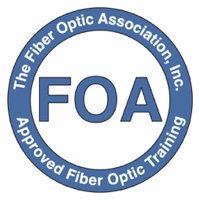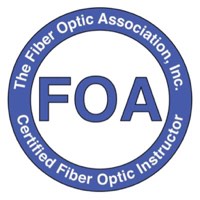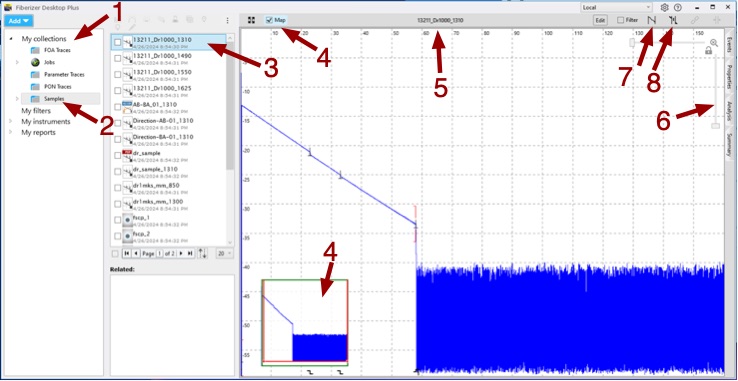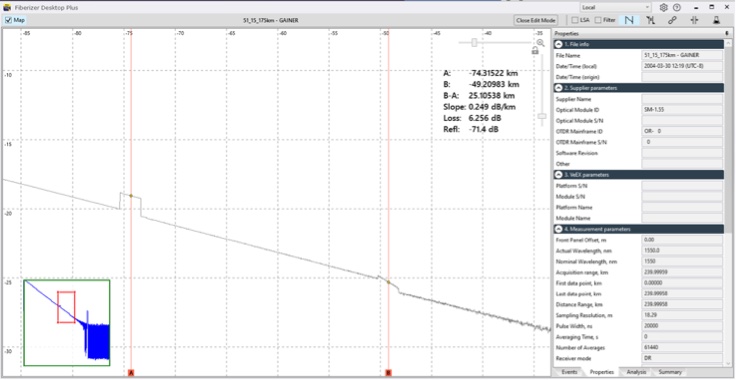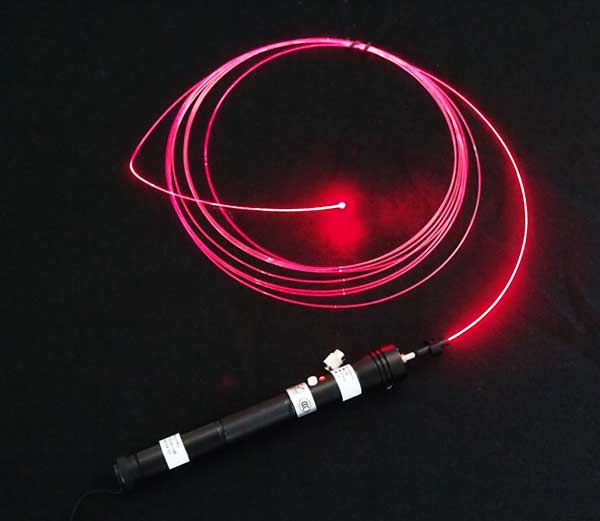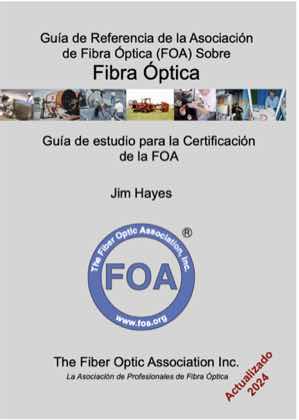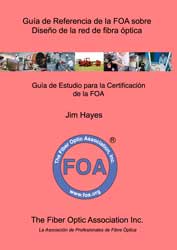
 June 2024 |
|||
Search the FOA website FOA Home Page Contact Us |
Sign up for the FOA eMail Newsletter Privacy Policy Links To Sections
|
||
|
INDEX Newsletter Sections Click on any link to jump to that section Features Manufacturers' Role In Training Online Credentials For Schools And Instructors Updated OTDR Trainer The Tech Business Is Complicated FOA Programs For STEM Education What's New And Popular On FOA Website News Key Trends In Long Haul Fiber To The Sugar Mills Wildfires Knock Out Fiber In Yukon Quantum Network Testing In Boston New FTTH Textbook in Serbian Language Broadband Communities Summit Technical Compatibility Issues For BI Fibers New Single Ended Testing Instrument Introduction To Fiber Project Software How Good Are Your OTDR Reference Cables? Best Example Of Worst Install? New Sumitomo Splicer NECA/FOA Standard Withdrawn Information From A Cable Scrap Managing Projects - Gantt Charts FOA Color Code Guides FOA Online Loss Budget Calculator Worth Reading Lots of interesting articles Q&A Interesting questions from our readers Workforce Training/FiberU Types Of Work Done By Fiber Techs FOA-Approved School News Fiber U MiniCourses Resources New FOA Technical Resources Safety About the FOA FOA Certified Techs: 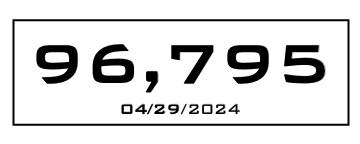 2024 At FOA - Heading For 100,000 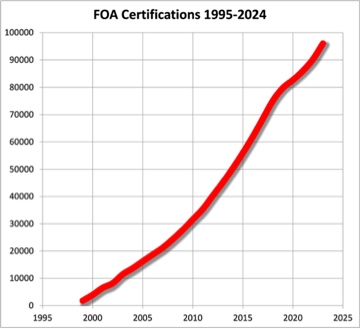 Jobs
Want to be notified when the FOA Newsletter is updated? Sign up for the FOA eMail Newsletter. Trademarks: The FOA logo and name, CFOT® (Certified Fiber Optic Technician) and Fiber U® (the FOA online learning site) are registered trademarks of the FOA.  Want to know more about fiber optics? Looking for specific information? Here's the largest technical reference on the web: The FOA Online Fiber Optic Reference Guide. 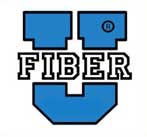 Free online self-study programs on many fiber optics and cabling topics are available at Fiber U, FOA's online web-based training website. FOA Reference Books Available Printed or eBooks The fiber book is available in Spanish and French   
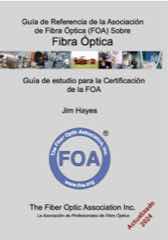 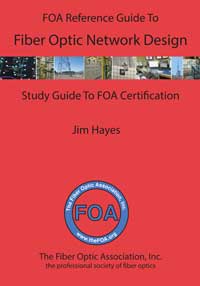  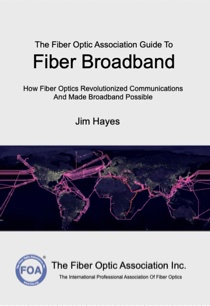 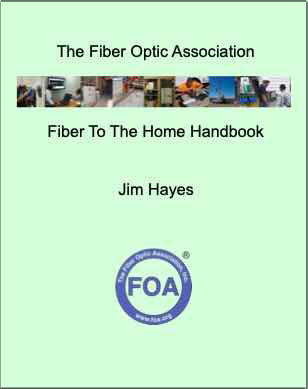 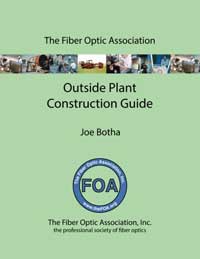  Click on any of the books to learn more.
FOA Videos on FOA is a member of: The FOA Newsletter is edited by Jim Hayes - send your stories, leads, ideas, comments to <jim @ foa.org>  Search the FOA Website With DuckDuckGo
1/22, 2/22, 3/22, 4/22, 5/22, 6/22, 7/22, 8/22, 9/22, 10/22, 11/22, 12/22 1/13, 2/13, 3/13, 4/13, 5/13, 6/13, 7/13, 8/13, 9/13, 10/13, 11/13, 12/13 1/12 , 2/12, 3/12, 4/12, 6/12, 7/12, 8/12, 9/12, 10/12, 11/12, 12/12 1/11 , 2/11, 3/11, 4/11, 6/11, 7/11, 8/11, 9/11, 10/11, 11/11, 12/11, 1/10 , 2/10, 3/10, 4/10, 05/10, 07/10, 08/10, 09/10, 10/10, 11/10 1/09 , 2/09, 3/09, 04/09, 05/09, 07/09, 08/09, 09/09, 10/09, 11/09, 12/09 1/08 , 2/08, 3/08, 4/08, 5/08, 6/08, 7/08, 8/08, 09/08, 10/08, 11/08, 12/08 12/07 , 11/07, 10/07, 09/07, 08/07, 07/07, 06/07, 05/07, 04/07, 03/07, 2/07, 1/07 12/06 , 11/06, 10/06, 09/06, 8/06, 7/06, 6/06, 5/06, 4/06, 3/06, 2/06, 1/06, 12/05 ,11/05, 10/05, 09/05, 08/05, 07/05, 6/05, 5/05, 4/05, 2/05, 01/05, 12/04 , 10/04, 9/04, 8/04, 7/04, 6/04, 5/04, 4/04, 3/04, 1/04, 12/03 , 11/03 10/03 9/03, 8/03, 7/03, 6/03, 3/03, 10/02 , 8/02, 5/02 Current Issue of FOA Newsletter Time To Renew Your FOA Certifications?To keep your FOA certifications active, you need to renew them when they expire every 3 years. Now we have a new more convenient way to renew - an online store at Paypal - where you can quickly and conveniently use your PayPal account or your credit card to renew your certifications.Join FOA On
Social Media
 FOA has 3 LinkedIn Groups FOA - official page on LinkedIn - covers FOA, technology and jobs in the fiber optic marketplace FOA Fiber Optic Training - open to all, covers fiber optic technology and training topics Grupo de La Asociación de Fibra Óptica FOA (Español) |
Fiber Optic Training - What Is The Role Of Manufacturers?In the early/mid 1990s when the FOA was being
started, manufacturers were a major source for training for fiber
optics. The manufacturers of fiber optic components like cable and
connectors knew that few contractors and installers knew anything about
fiber optics, so training was important to protect the company's own
interests. Unless the installers were properly trained and performed
installation tasks properly, it was likely the manufacturer who would
get blamed. Many manufacturers, large and small, had their own training
programs and certified installers specifically for the installation of
their products. Many also offered warranties on their products but only
if the installation was done by one of their certified installers. The FOA was founded by many of these companies to
offer an industry recognized certification that covered all fiber optic
installation including installation of their particular products. the
original CFOT KSAs
(knowledge, skills and abilities) were written with the collaboration of
companies like Siecor(Corning), 3M, Panduit, Automatic Tool &
Connector, Fotec and others in the industry.
Manufacturers' training suffered a deadly blow in
the bursting of the Internet/fiber optic bubble in 2001 and has never
fully recovered. For some companies it morphed into online training
about the products, riding on the technical development of streaming
video, primarily on YouTube. In some ways, streaming video instruction has been
great. It widens the availability of training to anyone with an
Internet connection. What's it's missing is the hands-on practice that
comes from an in-person class. During the pandemic, FOA tried expanding on this concept with the Fiber U Basic Skills Lab.
Lessons were created based on the learner having access to the proper
equipment like splicers or test equipment, in soe cases, even buying
inexpensive tools and components online. We learned that it is not easy
to teach hands-on skills online without proper equipment and a nearby
instructor to ask for help. In some areas around the world, manufacturers are more involved in training. In a recent article on workforce retraining in the NYTimes,
job retraining by manufacturers in Germany was used as an example.
"Germany prides itself on its vocational training, offered through a
dual-track system that combines school coursework with hands-on work
experience. Around 330 occupations require a trade certification, and anyone without one is largely out of luck — regardless of the skills that he or she may have acquired on the job." In most countries, training and certification are not required. Techs always learn on the job (OJT), but many also elect to get proper training and certification like that from FOA approved training organizations. They know that training makes them more productive and certification makes them more employable. FOA has manufacturers in our network of approved schools like Clearfield
which uses our certification program for both employees and customers.
FOA welcomes more manufacturers to join us; the industry needs your help
training the fiber optic workforce. FOA can provide the basic training
program and you need only add in your products to make it yours.
Online Credentials For FOA Schools And Certified Instructors
FOA switched to online credentials 1-1/2 years ago. Now every active FOA
certified fiber optic and premises cabling tech has an online
credential they can use to prove their certification, print paper
certificates and share on social media. When they add another
certification or renew, their online credential is updated. | ||
News
|
Quote of the month: “Middle mile is like the middle child that keeps getting ignored. If we continue ignoring it, at one point in time, we will not be able to connect all of these new last mile connections that we are planning on building in the next four years.” Sachin Gupta, Director of Government Business & Economic Development at Centranet.The Key Trends Shaping Long-Haul Capacity And Demand (Including AI)In an article above, we talk about the
hype that colors the markets for technology. One of the best groups to
cut through the hype is Telegeography, the UK group that tracks
submarine cables and produces beautiful maps showing their locations.
Telegeography also produces reports on the telecom/internet marketplace.
Recently they posted an article with the title The Key Trends Shaping Long-Haul Capacity And Demand that looks at market factors including the effects of AI. |
||
| BBG Telecom brings optical fiber to 130 mills in Pernambuco, Brazil BBG Telecom, founded 15 years ago in Camaragibe, metropolitan region of Recife, PE, is bringing optical fiber to around 130 sugar mills in the interior of Pernambuco, through its subsidiary CampusNet, based in Palmares. “This operation ensures high-speed connectivity to remote areas of the state, where not even cell phones reach”, says Gilmar Amaral, the company's commercial and marketing director. Sugar
mills are a fundamental part of the history and culture of Pernambuco.
The old production units, which transformed sugar cane into wealth, left
a remarkable legacy in the region. Installed in rural areas, the mills
face the challenge of difficult access and low population density. Known
in the region as “arruados”, the communities bring together houses
spread out and far apart. “For example, in one place there is a group of
20 houses and just 1.5 km later there are five more”, says the
director. Even so, CampusNet brings FTTH connectivity – fiber to the
home. “We have several strategic points of presence, we installed CTOs
and we use 100% legal posting. We often need to negotiate with the farms
to be able to pass the fiber through the properties”, he says.
|
BBG Telecom leva fibra óptica a 130 engenhos de Pernambuco, Brazil A BBG Telecom, fundada há 15 anos em Camaragibe, região metropolitana de Recife, PE, está levando fibra óptica a cerca de 130 engenhos de açúcar do interior de Pernambuco, por meio de sua subsidiária CampusNet, sediada em Palmares. “Essa operação assegura conectividade de alta velocidade a áreas remotas do estado, onde nem mesmo o telefone celular chega”, diz Gilmar Amaral, diretor comercial e de marketing da empresa. Os engenhos de açúcar são parte fundamental da história e cultura de Pernambuco. As antigas unidades produtivas, que transformavam a cana-de-açúcar em riqueza, deixaram um legado marcante na região. Instalados em áreas rurais, os engenhos têm o desafio do difícil acesso e baixa densidade populacional. Conhecidas na região pelo nome de “arruados”, as comunidades reúnem moradias espalhadas e distantes entre si. “Por exemplo, em um local há um grupo de 20 casas e somente 1,5 km depois há mais cinco”, afirma o diretor. Mesmo assim, a CampusNet leva a conectividade FTTH – fiber to the home. “Temos vários pontos de presença estratégicos, instalamos as CTOs e usamos posteamento 100% legalizado. Muitas vezes precisamos negociar com as fazendas para poder passar com a fibra pelas propriedades”, conta. |
Read More at RTI.
“Perfect storm:” Wildfires knock out services in the Yukon

The wildfires damaged communication infrastructure on May 10, disrupting access to emergency services.
Ongoing wildfires in Canada’s Yukon territory severed critical fiber lines, leaving customers in parts of the Yukon, British Columbia, and the Northwestern Territories leaving customers unable to communicate or access emergency services. Two separate fires damaged cables operated by local telco Northwestel simultaneously, leaving customers without access to mobile, internet, or telephony services.
“This really was a bit of a perfect storm,” said Northwestel’s vice-president of customer experience Tammy April to Global News. “We had two fires that really went from no fire to incredible blaze within a matter of hours of each other. So we had our east-west (fiber) route fail late afternoon on Friday, and it was within about five hours that we had our north-south route fail.”
To make matters worse, satellite phones – usually a reliable backup to terrestrial networks fail – were also experiencing disruption. April ascribed this disruption to electromagnetic interference resulting from the recent solar storm.
Repairs to the infrastructure have been underway since the weekend, with services already restored in most affected regions.
Read more in Broadband Communities.
Longest Quantum Network Tested On Existing Fiber Optics In Boston
It is just a test, but a very promising one. Quantum internet would allow for sending hacker-proof information around the world. Its secret is quantum mechanics and it is seen as an important development for the future of telecommunications. There are challenges to overcome, but progress has also been made – such as a new record set by researchers at Harvard University.
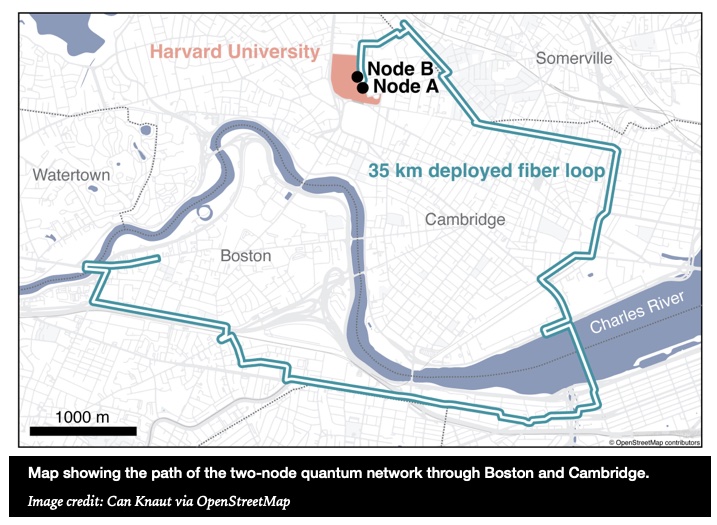
The team was able to demonstrate the longest transmission between two nodes using already existing fiber optics within the city of Boston. The fiber path was 35 kilometers (22 miles) in total, stretching around the city. The two nodes that connected to the close path were actually located one floor apart, so the fiber was not the shortest route but rather the more interesting one.
Showing that quantum network nodes can be entangled in the real-world environment of a very busy urban area, is an important step towards practical networking between quantum computers.
IFLScience on Apple News. Thanks to FOA instructor Terry O'Malley for sending this to FOA.
New Technical Book On FTTx In Serbian
Vladimir Grozdanovic is a graduate electrical
engineer for
telecommunications with more than 10 years of experience in access
networks (HFC and FTTH) in large cable operators in Serbia (SBB and
Jotel). He has been writing technical articles for the FOA Newsletter
based on his personal experiences. Now he has applied his writing
talents to a textbook on FTTx in his native language, Serbian. 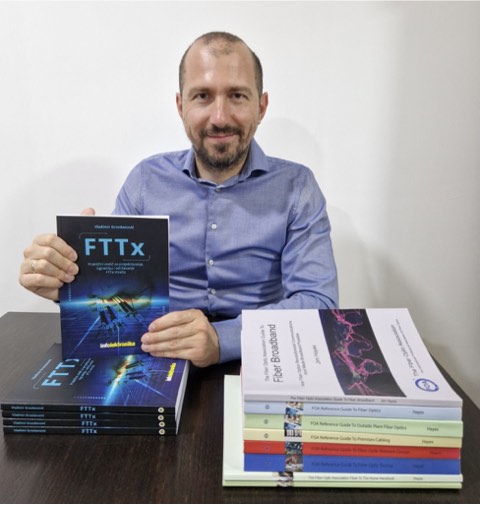
Below is his description of the book (in English!)
The
rapid expansion of the Internet, followed by the introduction of a
greater number of various services, has led to the increased user
demands, which resulted in continuous development of access networks.
Over the past decade, the demand for high bandwidth, high bit
rates in both directions, low latency, and more reliable services have
significantly pushed out old traditional telephone and cable networks
and contributed to the development and widespread popularity of optical
fixed access networks - particularly FTTH (Fiber To The Home).
This book will introduce you to modern FTTx optical networks
and provide a range of practical tips on designing, building, and
maintaining them.
The first part of the book covers the basics of optical
communication systems, types and structure of optical fibres and cables,
followed by fibre and cable labeling conventions, attenuation and
dispersion calculations, and finally measurements performed on optical
networks. The second part is dedicated to FTTx optical networks -
various FTTx scenarios, principles of design and construction, FTTx
testing, and troubleshooting typical problems on FTTx networks.
The book can be ordered through the publisher Infoelektronika website https://www.infoelektronika.net/. Delivery is available to all countries worldwide via standard mail or international express mail EMS.
Quote Of The Month Year:
(this is worth repeating)Speaking at the Goldman Sachs Communacopia +
Technology Conference, AT&T’s CEO John Stankey said, “There’s a
fallacy to say there’s fixed networks and wireless networks. There are
only fiber networks with different access technologies on the end of
them. That’s where this is all going.”
Technical
Fiber optic technology, standards, equipment, installation, etc.
The FOA Update Page covers the new technology and applications we covered in this newsletter recently. Now you can review all that new tech at once.
Cross Reference To FOA Technical Reference Materials
The FOA has almost 1,000 pages of technical information on the FOA Guide,
100+ videos and two dozen online courses at Fiber U, all this can make
it difficult to find the right information.
Cross Reference To FOA Tech Materials
To help this, we have created a cross reference guide to the textbooks,
Online Guide and Fiber U courses, all the FOA technical information.
Besides the textbooks, online Guide and Fiber U, each section of the
Guide also includes links to the 100+ FOA videos available.
Cross Reference Guide to Textbooks, Online Guide and Fiber U
We have also rearranged the 100+ FOA videos in similar categories on the Contents Page of the Online Guide, making the videos, especially the lectures, much it much easier to find a video on a particular topic.
FOA Videos Guide.
The Curious Compatibility Issues Of Bend Insensitive FIber
Bend insensitive (BI) fiber (also referred to as reduced bend sensitive - RBS - fiber) has been around for more than a decade now, but it is still not well understood and there are some technical controversies associated with it. When first introduced, it was mainly for multimode fiber which can get a lot of bending stress in premises applications, especially around patch panels. It took little time before practically all MM fiber was BI.That created the first controversies. There was much concern at the time over the testing of MM fiber with its dependence on modal distribution when testing loss. For many years, standards for testing called for using reference test cables with non-BI fiber. The problem was finding non-BI MM fiber cables. Eventually most standards changed to say use either fiber for reference test cables.
Singlemode fiber only recently joined this controversy. BI fiber (ITU-T G.657) was an essential component in making cables more densely packed with fibers. Not only did cables start using BI fibers to make cables more fiber dense, but they began using coatings of less than 200 microns on the fiber instead of 250 micron coatings to increase density even more. Many of today's cables, especially the high fiber count cables and those with flexible ribbons rely on BI fibers in their designs.
Then this month, FOA gets this inquiry: "I've currently got quite a few G652 launch boxes of various lengths but we are testing more and more G657 A1 fibre. My question is, are my G652 launch boxes compatible for testing G657A1 cable."
An ITU online publication says "ITU-T G.657.A1 and ITU-T G.657.A2 fibres are fully compliant with ITU-T G.652.D fibres."
FOA asked our technical advisor Joe Botha of Triple Play Fiber Optics about this compatibility. Joe has done studies on this issue for clients in Africa.
Here is what Joe tells us.
"To start with, they are perfectly compatible, with a marginal difference in MFDs i.e. only a slight gainer and additional loss is visible. With latest Corning fibers, the two MFDs are identical.
Years back, I was asked to do research on exactly this for a few FNO’s . Based on findings, the following recommendations are made:
Not too many are aware that the ~27m long fiber in a OTDR, is in fact G.652D - which is a good reason to use a G.652D launch patch cord and pigtail in your patch panel.
Where a fiber terminates in a patch panel, whether it’s a G.655, G.656, G.657, or G.652, etc, you should splice-on G.652D pigtails. The reasons for this are:
Your patch cords will in all likelihood be G.652D. And remember, the fiber in the OTDR is G.652D.
With different fiber types, one cannot obtain a perfect enough core alignment, like you would with a fusion spice, through a connector/mating adapter type connection."
From the trace below taken at 1310 nm, the splice loss of the joint between two ~25km fibers, one G.652 and the other G.657, is low and has minor directional differences. At 1550, the loss of the splice was too low in both directions for the OTDR to detect it.
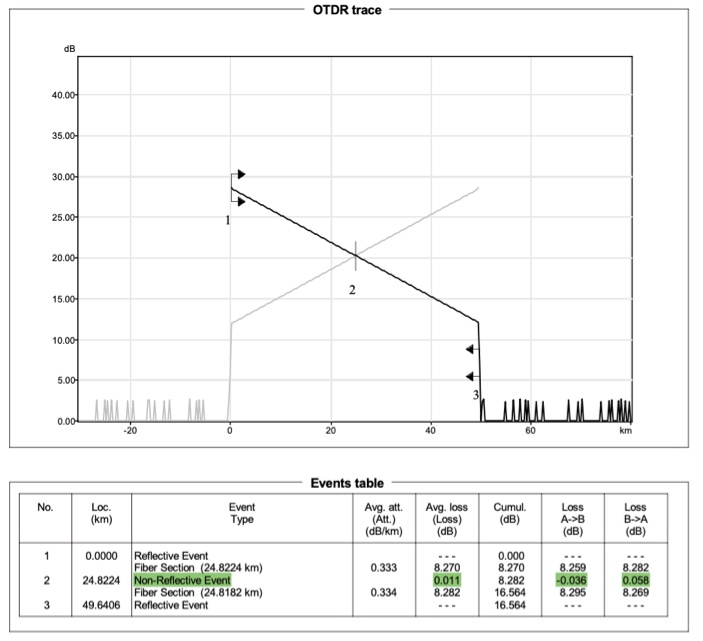
So the answer to the original question is "Yes, you can use your G.652 launch cables with G.657 fibers. The bigger question of compatibility of the two fibers is "Yes, they are compatible."
|
Sponsored Content
 OptConn
is a value-add re-seller of optical connectivity products, services and
solutions. With over 30 years of experience in the fiber optics
industry we are here to serve your requirements from fiber optic
training with FOA certification to products, materials and supplies. OptConn
is a value-add re-seller of optical connectivity products, services and
solutions. With over 30 years of experience in the fiber optics
industry we are here to serve your requirements from fiber optic
training with FOA certification to products, materials and supplies. We have partnerships with industry leading
manufacturers to support your installation, splicing and testing needs.
Our goal is to guide, support and recognized our client’s requirements. |
New Concept In Testing From One End Of A Cable
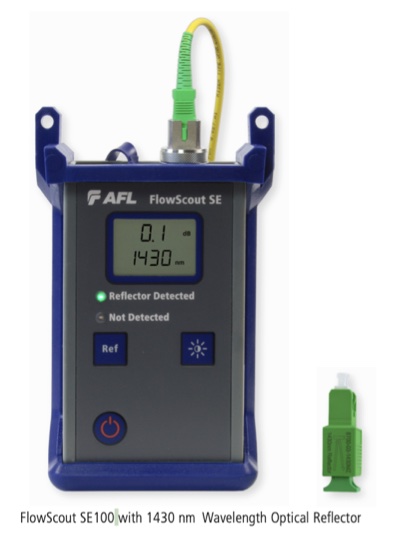 While
it might look a lot like a standard fiber optic power meter, the AFL
FlowScout SE100 and its special accessory, a dedicated wavelength
optical reflector, is a different kind of tester. The instrument is an
OCWR - optical continuous wave reflectometer - a complicated name for an
instrument that sends out a steady signal and looks for a reflected
signal on the same fibre. Remember the OTDR sends out a pulse and times
the return pulse for distance information and looks at backscatter for
loss information. The OCWR just measures the return power.
While
it might look a lot like a standard fiber optic power meter, the AFL
FlowScout SE100 and its special accessory, a dedicated wavelength
optical reflector, is a different kind of tester. The instrument is an
OCWR - optical continuous wave reflectometer - a complicated name for an
instrument that sends out a steady signal and looks for a reflected
signal on the same fibre. Remember the OTDR sends out a pulse and times
the return pulse for distance information and looks at backscatter for
loss information. The OCWR just measures the return power. The unique feature of the AFL SE100 is the tuned relfector. It uses an optical device called a bragg grating to reflect light around 1430nm but transmit light at other wavelengths. By having its internal source at 1430nm, it measures the reflected light at 1430nm and computes the loss of the fiber from one end.
Since the relfector passes light at other wavelengths, it can be inserted at the end of the cable, for example at a customer ONT in a FTTH system for testing the link to the ONT, then left in place during the PON network operation. Any time testing is required, it can be done by a single tech from a remote location.
The concept is also a good one for difficult testing situations like fiber to the antenna (FTTA) at a cell site. Once the reflector is inserted, testing can be done from the ground.
Follow these links for more information on the AFL FlowScout SE100 and it's reflector.
How Good Are Your OTDR Launch/Receive Cables?
FOA received an inquiry about some OTDR traces that showed failures. Quite a few fibers failed at the final connection to the receive cable, indicating that there could be a problem with the connection - dirt of a bad connector on the receive cable. Have you checked the connectors on your OTDR - or OLTS - reference cables recently? You should inspect and clean them regularly - every few connections - to ensure they are good. If they are bad, they will cause false failures on the cable under test.Introduction to GIS and Fiber Management Systems
There is a rising demand for efficient fiber optic network solutions, and Jerry Morla has written an article offers an overview of digital management tools, including emerging options and traditional platforms. These tools are essential for planning, implementing, and maintaining networks, ensuring operational efficiency and customer satisfaction in the telecommunications and fiber optics sectors. If you need more information in this area, check out the following article:While Geographic Information Systems (GIS), Fiber Network Management Systems (FNMS), and Operational Support Systems/Business Support Systems (OSS/BSS) each serve distinct purposes, their integrated functionality enables efficient, reliable, and customer-focused fiber optic network deployment and operations. Understanding their roles, differences, and synergies provides a comprehensive view of the technological orchestration behind the scenes of our interconnected world.
Read the article here in the FOA Guide.
NECA/FOA 301 fiber optic installation standard withdrawn
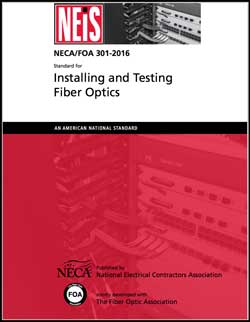 The NECA/FOA 301 fiber optic installation standard has been
withdrawn. It's almost a quarter century old and a decade since the
last update. It has been decided the standard needs to be replaced with a
more modern document covering current technology and written in a
format that allows easier updating.
The NECA/FOA 301 fiber optic installation standard has been
withdrawn. It's almost a quarter century old and a decade since the
last update. It has been decided the standard needs to be replaced with a
more modern document covering current technology and written in a
format that allows easier updating. In the meantime, there is lots of useful information in the standard and you can still download a free copy from FOA.
Download your free copy of ANSI/NECA/FOA-301 here (PDF)
FTTH Technical Papers
FOA contributor Vladimir Grozdanovic has created
another technical paper on testing FTTH PON based on his field experiences.
Testing The FTTH PON Network (new)
Installation of FTTH Active Equipment in the FOA Guide.
Optical Splitters in the FOA Guide.
Examples of poor installation of FTTH in the aerial outside plant and in the customer premises.
Recycling Fiber Optic Cables? Contact LD4 Recycle
Learning Important Information From A Found Cable Scrap
While walking down the street near the FOA office, we found this cable
laying in the gutter. What a find! A short length of Corning Rocket
Ribbon 864 fiber cable left over from an installation by a contractor. 
We brought the cable back to our office with the intention of opening it up and creating a video about the construction of this modern high fiber count cable, but something got our attention first. The cable had a very long line of printing on it with lots of interesting and useful information. So before we started deconstructing it, we decided to photograph the printed information and interpret it. That turned out to be an important part of the information we learned from the cable. Then, as you will see below, we dissected the cable and learned even more.
Red more about what this cable marking tells you and what the cable looks like when you open it up to prepare for splicing.
Managing Fiber Optic Projects - The Gantt Chart
(With An Excel File To Make Your Own)
The most common way to track projects is the Gantt Chart, a
chart of activities that tracks the progress of projects along a
timeline. each activity is represented by a bar and the position and
length of the bar represents the starting date and duration of the
activity. This allows you to see what activities are needed for the
project, when the activities start and end so it can be used to track
the progress of the project visually. Here is what a Gantt Chart for a
fiber project might look like:
 You might remember an article in the FOA Newsletter in April 2022 or the FOA Guide page on Project Management about the timing of a fiber optic project where we showed the progression of steps in a project like this:
You might remember an article in the FOA Newsletter in April 2022 or the FOA Guide page on Project Management about the timing of a fiber optic project where we showed the progression of steps in a project like this: The Gantt Chart is simply this list converted to a Gantt Chart using a Microsoft Excel spreadsheet. You can download a copy of the FOA Gantt Chart spreadsheet (xlsx file - 16kB) and use it to create your own Gantt Chart for any project. All you have to do is to input your own data and change the activity names as necessary. You can also follow the directions from Microsoft to create your own version.
Help On Color Codes (Including Copper Cabling And Fiber Optics)
The FOA has created a print-your-own pocket guide to fiber
optic color codes. It has
color codes for fibers and buffer tubes, connectors and premises cables
inside and on the back, QR codes to take you directly to the FOA Guide
and Fiber U. The FOA
Guide page on Fiber Optic Color Codes is one of the most read pages on the FOA
website and the Fiber Optic Color Codes minicourse on Fiber U very popular also.
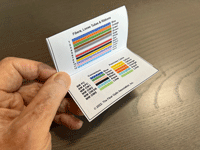


Here are the links to download your own FOA Guides to Fiber Optic Color Codes
FOA Guide to Fiber Optic Color Codes (print your own version) PDF
FOA Guide to Fiber Optic Color Codes (electronic version for your smartphone, tablet or PC) PDF
And Color Codes For UTP Cabling
FOA Guide to UTP Cabling Color Codes (print your own version) PDF
FOA Guide to UTP Copper Cabling Color Codes (electronic version) PDF
Warning For Techs Doing OSP Restoration
 FOA received an inquiry about whether techs
working on restoring OSP links should be concerned about eye safety if
the link used fiber amplifiers. To answer this question, we had to do some research on fiber amplifiers.
The short answer is YES, you should be concerned. The long answer is
more technical and includes details that every OSP tech needs to know.
FOA received an inquiry about whether techs
working on restoring OSP links should be concerned about eye safety if
the link used fiber amplifiers. To answer this question, we had to do some research on fiber amplifiers.
The short answer is YES, you should be concerned. The long answer is
more technical and includes details that every OSP tech needs to know.See "Fiber Amps And Restoration" in the FOA Newsletter Archives..
Try The FOA's Online
Loss Budget Calculator
FOA has written many articles about loss budgets, something everyone involved in fiber optics needs to know and needs to know how to calculate. We've created a online Loss Budget Calculator that does the work for you. Just input your cable plant data and it calculates the loss budget. It works on any device, especially smartphones and tablets for field use and even allows printing the results.
Bookmark this page (especially on your smartphone): FOA Loss Budget Calculator Online
Worth Reading
Each month we read hundreds of newsletters and online articles. These are the ones we think you will find "worth reading."
FOA has a web page with resources on fiber broadband networks and the IIJA/BEAD funding programs.
Cross Reference Guide to FOA Textbooks, Online Guide and Fiber U
FOA Timeline of Fiber Optic History and the new FOA video "The History Of Fiber Optics"
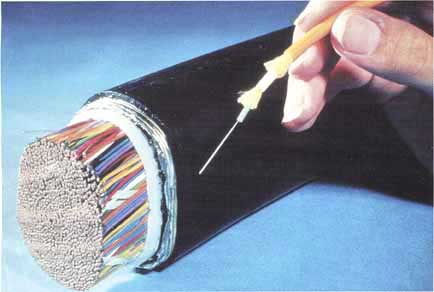 AT&T PR photo from the mid 1970s
AT&T PR photo from the mid 1970sThe FOA's History
Stories From The Past FOA Newsletters
- Last Gasp For Multimode Fiber?
-
Who Lost Lucent? The Decline of America's Telecom Industry.
- How Many Fibers? Optimal cable Size.
- Women Installers In Alaska. .
- Building Rural FTTH - Learning From The History Of Rural Electrification.
-
Warning For Techs Doing Restoration (Fiber Amplification).
- The Future Of Work Is Skills - So Stop Worrying About Degrees - The reality is the future of work is about skills, not just degrees. (FOA Newsletter Feb 2020)
Recent articles from The FOA Newsletter
Fake OTDR Traces Submitted For Testing Documentation January 2023 Tech
Using OTDRs To Test Transoceanic Cables And PONs February 2023
POF - the Other Fiber March 2023
What Do Employers Expect From A Fiber Optic Tech? April 2023
Are Standards Ignoring The OSP? May 2023
FOA Has Proven Results In Fiber Optic Workforce Development June 2023
BEAD Funding For States Announced And Analyzed July 2023
Wisdom From The Street (Analyzing the printing on a fiber optic cable) July 2023
Focus On Disasters August 2023
FOA's Role In Education and Work Done By Fiber Techs September 2023
The Workforce: New US DoL Bureau of Labor Statistics Telecom Tech Category October 2023
How Many Telecom Techs Do We Need and How Big Is The Fiber Optic Market November 2023
Guidelines For Fiber Optic Project Planners December 2023
2023 Year In Review. Kentucky Shows The Value Of Fiber January 2024.
What is Broadband? History of the Cable Modem February 2024
It's Just Economics. Things you need to know. March 2024.
Fiber To The Shore - Undersea cables along the coast April, 2024.
The Future Of The Fiber Tech May 2024.
Worth Reading (And Watching):
May 2024
Responsible Fiber Deployment: Strategies for Protection and Damage Prevention - Excavation Safety Alliance - YouTube video, 1hr.
Corning opens new Hickory, NC, optical cable manufacturing campus - Lightwave
How a simple fix could double the size of the U.S. electricity grid - Washington Post -
Rewiring miles of power lines could make space for data centers, AI and a boom in renewables.
April 2024
The March/April Digital Edition of ISE Magazine - Interesting interviews and an article on preparing for disasters.
Copper decommissions spread across the US, albeit quietly
- Some smaller US telecom providers are toying with the notion of
shutting down their copper networks, following years of pioneering
efforts by bigger network operators like AT&T and Verizon.
Scientists ride new fiber wavelengths for terabit speed - A team of researchers got to terabit speeds using E- and S-band spectrum over a single optical fiber
Internet data centers are fueling drive to old power source: Coal
- Antiquated coal-powered electricity plants that had been scheduled to
go offline will need to keep running to fuel the increasing need for
more power at data centers, undermining clean energy goals.
Recent Articles
Can Our Industry Develop Fiber Talent? ISE Magazine. Learn how states, schools and training organizations must work together to develop fiber field talent.
Landlines are dying out. But to some, they’re a lifeline. Washington Post Providers want to scale back landline service, but people with poor cell reception still rely on it for emergencies.
Pre-Excavation Safety Checklist (PDF) - Excavation Safety Alliance - essential steps before breaking ground for underground construction.
Fiber vs Wireless - Are You Kidding? ISE Magazine Of course we need both!Developing a Fiber Workforce Really Does Take A Village - ISE magazine looks at the role of manufacturers' training in developing the fiber workforce.
How Many More Fiber Techs Do We Really Need? - ISE Magazine

CABL® (cabl.com) serves the business needs of the Broadband industry (including traditional cable TV, fiber, telecom and satellite providers) with employment listings, classified ads, discussion forums, and more. A contractor told us it's where they find lots of opportunities for subcontracting.
Do You Believe In Magic? Sufficiently advanced technology is indistinguishable from magic. ISE Magazine.
The 45 Year Old Overnight Sensation - ISE Magazine (Read the complete Nov/Dec issue of ISE Magazine here.
ESRI has created an ebook on GIS location technology for telecom. Use the link to download the book.
Conocimiento Esencial: ¿Por qué la fibra óptica? creado por FiberWizards
Recruiting And Training Today's Fiber Optic Workforce - Learn the fundamentals to recruit and train new fiber optics -ISE Magazine.
Google Video On Their Undersea Cables YouTube Slick but interesting video on how undersea cables are designed, built and used.
Construction Without Disruption - ISE Magazine
Fiber Optics Installed By The Lowest Bidder - ISE Magazine
Building Broadband During Component and Worker Shortages
- Broadband Communities - Completing broadband builds requires
competent fiber optic techs, but training them requires understanding
how they learn.
Worth Reading - Magazines, Websites and Newsletters
CABL® (cabl.com) serves
the business needs of the Broadband industry (including traditional
cable TV, fiber, telecom and satellite providers) with employment
listings, classified ads, discussion forums, and more. A contractor told us it's where they find lots of opportunities for subcontracting.
The Institute for Local
Self-Reliance weekly newsletter has
lots of interesting articles and links.
Next Century Cities Newsletter
- News from cities around the US
including Detroit and New York plus small
RTI Telecom Magazine from Brazil, in Portuguese. A revista RTI do mês de abril já está disponível online e recomendo a leitura de alguns artigos:
FOA was founded in 1995 - FOA's History
As part of celebrating 25 years of serving the fiber optic industry in 2020 as its primary source of technical information and independent certifying body, FOA thought it appropriate to create a short history of the organization and how it has developed to help the fiber optic industry. We also wanted to recognize the contributions many people have made to the organization over the years that made FOA what it is today.The FOA history is now archived on the FOA website where you can read it anytime or link to it. Updated info - dB, total internal reflection and science projects,
Worth Reading - History & Technical
1983 Video of AT&T's First Test Of A Submarine Cable System From the AT&T Tech Channel archives (worth exploring!)
Richard Epworth's Optical Fiber History from his work at STL from 1966 with Charles Kao.
50th Anniversary of The Development of Low Loss Fibers A history of the development of low loss fiber, a fascinating story by Jeff Hecht on the OSA (Optical Society of America) website.
The First Transcontinental Telephone Line began operation on July 29th in 1915 - 3400 miles between New York and San Francisco - required over 100,000 telephone poles! Wonders of World Engineering
"Who Lost Lucent?: The Decline of America's Telecom Equipment Industry"
This is a MUST READ for managers in telecom or any industry!
Communications Systems Grounding Rules: Article 800 provides specific requirements by Michael Johnston, NECA Executive Director of Standards and Safety in EC Magazine
US Broadband Coverage By Service Provider from the FCC
How To Build Rural Broadband, Learning From History
In the August 2021 FOA Newsletter, we published a lengthy article on rural broadband and compared it to rural electrification in America in the last century. Much of the comparison was based on an article written in 1940 by a USDA economist, Robert Beall, called "Rural Electrification." If you are interested in or involved in rural broadband, we recommend you read the article "How To Build Rural Broadband, Learning From History" in the August 2021 FOA Newsletter and read the Beall article also.
Recycling Fiber Optic Cable - Contact:
Steve Maginnis
LD4Recycle/ CommuniCom Recycling
(Visit website)
sm@LD4Recycle.com
803.371.5436
Sumitomo's Ribbon Splicing Guide - download from one of the leaders in splicing.
OFS also has an excellent website and blog of tech articles worth browsing.
IEC 60050 - International Electrotechnical Vocabulary - An extensive dictionary for fiber optics in English and French. Highly technical - this is one definition: "mode - one solution of Maxwell's equations, representing an electromagnetic field in a certain space domain and belonging to a family of independent solutions defined by specified boundary conditions"
Restoration: If you are interested in restoration -
aren't we all? - you should also read this
article in dpPro magazine by FOA President Jim
Hayes: Damage Protection Requires
Looking Overhead As Well As Underground
- dpPRO Magazine - about the problems with
aerial cables. His previous article for the
magazine was New Techniques for Fiber
Optic Installation.
Universal access to broadband
is a cornerstone to a strong economy,
Achieving universal access will require
community partnerships. by Alfreda
B. Norman, Sr. VP, Federal Reserve Bank of
Dallas
FIBER TO THE FARM: The
co-ops that electrified Depression-era farms are
now building rural internet. Be sure to check out
the high-tech equine installation equipment.
Infrastructure Get Some
Respect, NY TImes "On Tech"
"The magic of the internet requires a lot of
very boring stuff behind the scenes. "
Fiber Trivia From Corning.
VIAVI Books On Fiber Optic Testing (2 volumes) - They're back!

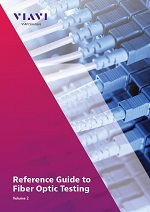
Besides the FOA reference materials, two JDSU/VIAVI textbooks, Reference Guide to Fiber Optic Testing, Volumes 1 and 2, were used as references for some of the FOA courses and are recommended for instructors and students. The books are available from VIAVI as eBooks and the everyone should download them and recommend them to others.Download yours now. Volume 1. Volume 2. Viavi Books
Ciena's Submarine Cable Handbooks (4 to download)
How OFS Makes Fiber
Interesting YouTube video on how fiber is made. Perhaps a little too much "show biz" but fascinating. If you have ever seen fiber manufacture, look at this video. You will be amazed at how big preforms have become!
The True Cost of Telco Damages (what backhoe fade or target practice can cost)
Rural Electric Cooperatives: Pole Attachment Policies and Issues, June 2019.
Q&A
When readers ask us questions, we genrally refer them to FOA
resources where they can find the answer to their question and many
more. We first send them to the FOA Guide
which is the table of contents for the FOA technical resources. There
they can find pages indexed by topic and a search engine for the FOA
website. It also links them to FOA videos and courses on our free online learning site Fiber U.
The FOA Fiber FAQs Page (FAQs = frequently asked questions) gathers up questions readers have asked us (which first ran in this newsletter) and adds tech topics of general interest.
Good Question!
Tech
Questions/Comments From FOA Newsletter Readers
More Q&A in the FOA FAQs Page
Grounding Armored Jumper Cables
Q: Do you need to bond/ground FTTH drop "jumpers" that ise an armored cable?
A: Yes, just like any other cable that has conductive elements. A
manufacturer of the cables Tinifiber seems to agree:
https://tinifiber.com/bonding-and-grounding-armored-fiber-cable/
I do not know of any fiber optic connectors that address this, unlike the RJ-45/modular 8-pin connectors for UTP copper.
Disoposal Of Fiber Optic Cables
Q: How does an organization dispose of unwanted fiber optic cables in an environmentally safe manner?
A: We recommend that users save some reels leftover from an installation
for possible use in restoration. If a cable break occurs, getting cable
quickly can be a problem. We also have a contact who says he can
recycle fiber optic cable:
Contact: Steve Maginnis, LD4Recycle/ CommuniCom Recycling, (Visit
website https://ld4recycle.com), sm@LD4Recycle.com, 803.371.5436
Otherwise, it is basically landfill.
Finding Buried Fiber Optic Cables
Q: We have a client that needs their private fiber
located. We have been on site and confirmed the lines were
installed with no tracer wire or conductive conduit/sheathing.
Want to know if you had any suggestions on how to locate or if there was
specialized equipment that I am aware of.
A: Interesting question on an important topic. The answer is a
qualified maybe. Ground penetrating radar (GPR) can sometimes spor fiber
optic cable, maybe more easily if it is in duct or conduit. It requires
someone with a lot of experince in GPR. There are companies around the
US with this capability. Then there is a new proposal using the sensing
capability of fiber with above ground vibrators. Nothing commercial is
available here as far as I know.
https://www.winlab.rutgers.edu/~hansiiii/papers/OECC_2020_Liu.pdf
Fiber Optics For Alarm Systems
Q: Can you please help me with having information about if do you know
if someone did use fiber for complete fire alarm systems, sensor, smoke
detectors, panels etc.
A: FOA checked with my technical contact at the IBEW, Jim Simpson, for this topic. Here is his answer:
NFPA does indeed have requirements for fiber in fire alarm systems. Keep
in mind, the requirements may vary depending on which edition of NFPA
72 the jurisdiction has adopted. The info below is based on the 2022
NFPA 72.
- Chapter 12 covers Circuits and Pathways
- Section 27.4 covers Communications Methods
- Section 27.7 covers Public Cable Plant
Updating FOA Courses And Reference Materials
Q: How often are FOA courses updated? And when they get updated, what happens to those who would have done a previous version?
A: The FOA certifications are updated as needed to stay current with
technology and applications. Udates are incremental and we do not
require current certification holders to retake courses or exams. Some
of our updates are almost humorous. For example, over the last 20 years
the definitions of “hybrid” and “composite” cables have flipped twice in
several international standards. At the last time, we changed all
references to these cable types in all our materials to note the
confusion it creates, then purged all questions from our exams that
covered this confusing topic.
Older questions can be found on the FAQs page.
Fiber Optic Color Codes Reference Chart
Q: Has anyone made a fiber optic pocket reference chart that has cable color orders, frequencies, or other commonly used info on it?
A: The FOA has a page on its Online Guide that covers color codes (https://foa.org/tech/ColCodes.htm). It is the most popular page in the FOA Guide! It works great with a smartphone.
More Q&A in the FOA FAQs Page

The word on the "Dig Once" program is getting out - FOA is getting calls from cities asking us for information and advice. Here are some links:
The DoT page on the administration’s Executive Order: http://www.fhwa.dot.gov/policy/otps/exeorder.cfm
And the one to download and hand out:
A “How To” Guide from The Global Connect Initiative: https://share.america.gov/wp-content/uploads/2016/04/6.-GCI-Dig-Once.pdf
Training / FiberU
News and resources to help you learn more and stay updated.
Learn about the fiber optic/ broadband workforce
Find a listing of all the FOA-Approved schools here.

Free online self-study programs on many fiber optics and cabling topics are available at Fiber U, FOA's online web-based training website.
Free online training at Fiber U
The FOA has >100 videos on

The Types of Work Done By Fiber Techs And How It Affects Training

What is a fiber optic technician? What kinds of work do they do? Those topics were the center of FOA discussions with the US Department of Labor Bureau of Labor Statistics that led to the new job category of "Telecommunications Technician" on the BLS website. The focus of this job category is primarily the installation and operation of the fiber optic cable plant, but one should not forget the cable plant must be designed also as part of a more extensive communications network.
In our discussion with the BLS analysts, we pointed out the various stages of a fiber optic communications network project and how techs with various knowledge and skill sets are needed and involved in every step. Here is how FOA defines these stages of a project and the skills of the techs. This is not unique to FOA; it's what has been traditional at telecom companies forever.
Planning and Design: Once needs for a communications network is established, project managers will be responsible for all the details of the project while experienced fiber techs trained and experienced in fiber optic network design (CFOS/D) will design the cable plant itself. (FOA Guide - Design)
Construction: Aerial cable plants may require installing new poles or doing make-ready on existing poles and messengers. Underground construction requires trenching and installation of ducts. In many cases the actual construction is done by general construction workers, as the construction work in many cases is not unique to fiber optics. Heavy machinery is required for much of the construction work and training is focused on safety as well as operating the machinery. (FOA Guide - Construction)
Fiber Optic Cable Installers: Once the route is prepared, the fiber optic cable can be installed. Aerial cable installation depends on the type of cable. Regular OSP cable, figure 8 cable and ADSS cable requires special hardware and installation techniques so the techs must understand the process appropriate for each cable. (FOA Guide - Installation)
Splicers: Since the beginning, fiber techs have been called "splicers" because that was the original job unique to fiber optics. Construction and cable installation was not very different from earlier copper cables, but splicing was very different. Even today, fiber techs are often called splicers and splicing is a core skill for any fiber tech whether they are joining cables or terminating them. (FOA Guide - Splicing)
Testers: After the fiber optic cable is installed and spliced, it must be tested. Testing goes together with splicing since every splice will be tested, often as soon as it is made so if it needs redoing, it should be done before the splice closure is sealed. (FOA Guide - Testing)
Network Operators: Once the cable plant is built and the communications equipment installed, it needs techs who know how to operate the comms but may only know how to connect new gear or change connections on current gear. These techs should also know how to troubleshoot systems in an outage and either do the restoration themselves or call a tech who can. (FOA Guide - Operation)
These categories merely define the stages of installation of a fiber optic project. Of course there are subsets of these categories and most fiber techs are expected to have skills and jobs that cross into multiple groups, as FOA has defined in the KSAs (knowledge, skills and abilities) for a CFOT.
What an individual worker does differs according to their job. An independent fiber contractor may cover every job except operation and a FTTH subscriber installation tech may only understand installing cables, testing and connecting equipment within the scope of FTTH systems. A construction company may handle the trenching and even pole setting as well as parts of the traditional fiber work.
The FOA defined its role early on to focus on educating and certifying techs in the fiber specific skills: cable installation, splicing, testing and restoration. FOA would like to see more schools get into the construction phase, especially for newer techniques like microtrenching and blowing cable, but these require large outdoor areas for training and large investments in equipment. Most techs who learn these processes now do it with OJT - on-the-job-training - and hopefully get OSHA training for safety.
New In Spanish - Nuevo en español
FOA Spanish Textbook And Online Guide Updated
The FOA Spanish textbook and Online Guide on basic fiber optics has just been updated. The new version includes all the latest updates and is intended for use with FOA CFOT certification classes presented in Spanish. Both paperback and Kindle versions are available. The textbook and the updated CFOT class curriculum are available now.Libro de texto en español y guía en línea de FOA actualizados
Se acaba de actualizar el libro de texto en español y la Guía Online de FOA sobre fibra óptica básica. La nueva versión incluye las últimas actualizaciones y está diseñada para usarse con las clases de certificación FOA CFOT presentadas en español. Están disponibles versiones de bolsillo y Kindle. El libro de texto y el plan de estudios actualizado de la clase CFOT ya están disponibles.FOA Adds Fiber Optic Network Design in Spanish
El libro de texto de FOA Design y el plan de estudios del curso también están disponibles en español. El plan de estudios de FOA CFOS/D en español incluye los materiales necesarios para que un instructor presente el curso en español y dé el examen de certificación CFOS/D en español. El material está disponible para cualquier escuela aprobada por la FOA. Para obtener más confirmación sobre cómo convertirse en una escuela aprobada por la FOA, vaya aquí.
FOA School News
FOA's roster of approved schools is growing as more organizations recognize our expertise in workforce development and our comprehensive support for getting new schools started. FOA has over 25 years experience and nearly 100,000 certified fiber techs (with ~130,000 certifications). As a non-profit organization founded by the industry specifically to develop a competent workforce, FOA provides the consultation, curriculum and contacts to get schools started as a free service to new schools.
Complete listing of FOA Approved Training Organizations
Need A Fiber Optic Course Onsite? Invite an FOA School To Come To You
FOA often gets inquiries from an organization that
has personnel that needs training in fiber optics. Recent inquiries have
included contractors, a manufacturer of high-reliability products using
fiber optics and a cable manufacturer. In many cases, where there are
several people needing training, FOA can recommend a FOA Approved School
and Certified Instructor who will come to their location to teach a
class. The advantage is of course the savings in travel costs if
the class comes to you, but it also offers the opportunity to customize
the course to fit your needs, even use your equipment or work on your
components, so the training is more relevant to those taking the class.Contact FOA to discuss the idea of a custom, on-site class to see if it will better meet your needs.
Fiber U On-The-Job Training (OJT) Program
The FOA Fiber U OJT program for novices combines online study at Fiber U with OJT with mentoring by experienced co-workers and their supervisor to help new employees develop into experienced FOA-certified technicians.
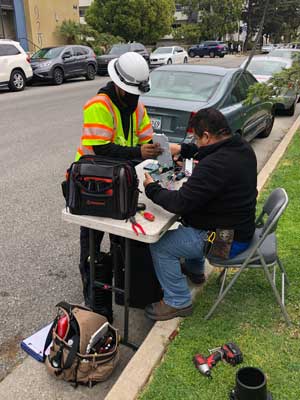
The FOA Fiber U “OJT-To-Cert” program includes both fiber optics and premises cabling (copper, fiber & wireless), so it covers techs working in both outside plant and premises jobs.
Like other FOA programs, the OJT-To-Cert program is free. If you and/or your company is interested in the FOA OJT-To-Cert program, contact FOA.
To explain how OJT
works and FOA's OJT-To-Cert program, FOA created a
short video: Lecture 62: On
The Job Training For Fiber Optics Using Fiber
U
FOA
Direct Certification Program For Experienced Fiber Optic Techs
Experience Plus Online Study At Fiber U = FOA Certification
Experienced fiber optic technicians can become FOA Certified using their experience in fiber optics and study for the FOA certification exams online at Fiber U. Thousands of industry professionals have applied to the FOA directly for certification without the need for classroom training, based on their knowledge and skills developed working the field. Since FOA certifications are based on KSAs (knowledge, skills and abilities), current techs can show the skills and abilities required through their field experience. FOA provides free online self-study courses at Fiber U for the knowledge part to prepare you for FOA certification exams which you can also take online.
If you are an experienced field tech interested in certification, and FOA is the internationally recognized certifying body for fiber optics, you can find out more about the FOA Direct Certification Program here.
If you are already a CFOT, FOA also offers many specialist certifications you can obtain based on your experience as a field tech. See what's available at Fiber U.
Fiber U "Basic Fiber Optics" Online Self-Study Course Now In Spanish
El curso de autoaprendizaje en línea "Fibra óptica básica" de Fiber U ahora en español
El sitio de aprendizaje en línea de FOA, Fiber U, tiene más de dos docenas de cursos de autoaprendizaje gratuitos sobre fibra óptica y cableado de instalaciones. Como era de esperar, el tema más popular es el curso "Fibra óptica básica", que se utiliza para iniciarse en la fibra óptica y como curso de preparación para realizar el examen de certificación FOA CFOT.
Ahora el curso básico de fibra óptica está disponible en español, utilizando el libro de texto FOA en español, la sección de la Guía en línea en español y la capacidad de YouTube para traducir subtítulos de video al español. El curso funciona exactamente como la versión en inglés con 10 lecciones, cada una con cuestionarios y una opción para tomar un examen de Certificado de finalización.
Para presentar el nuevo curso de
español Fiber U, el examen Certificate of
Completion es gratuito, así que dígaselo a sus
contactos.
Curso Básico de Fibra Óptica
de Fibra U en español.
New Fiber U Course: Fiber Characterization
FOA has added a new course at Fiber U on Fiber Characterization. Fiber
characterization is the process for testing long fiber cable plants for
its ability for carrying high speed communications. With so many
networks now operating at 100, 200, 400 or even 800 Gb/s, fiber
characterization is important, especially on older fiber optic cable
plants.The free Fiber U Fiber Characterization course is available in two forms, as a standalone Fiber U fiber Characterization Course with its own Fiber U Certificate of Completion and as a separate Lesson in the Fiber U Fiber Optic Testing course. This course is recommended for those studying for the FOA CFOS/FC Fiber Characterization certification.
Fiber U MiniCourses: Got An Hour Or Less? Learn Something New About Fiber Optics.
FOA has introduced a new type of Fiber U course, the MiniCourse, a free online course you could take in a short time, perhaps as you ate lunch at your desk or took a coffee break. The topics of these courses should explain what they are about, and these are all very important topics to fiber optic techs.
New Fiber U MiniCourse - Fiber Optic Jargon
There is a new MiniCourse at Fiber U - Fiber Optic Jargon. Jargon is the most important thing you need to learn when you learn about a new technology. This short Fiber U MiniCourse is intended to introduce you to fiber optic jargon and make learning about fiber much easier. It's aimed at novices but is a good refresher for even experienced techs.
Fiber Optics In Communications
Fiber Optic Jargon
How Optical Fiber Works
Fiber Optic Network Restoration
Fiber Optic Connector Identification
Fiber U Color Codes
The Mysterious dB of Fiber Optics
Fiber Optic Cable Bend Radius
Fiber Optic Link Loss And Power Budgets
Fiber Optic Connector Inspection And Cleaning
Fiber Optic Media Conversion
Fiber Optic Cable Midspan Access
Reading An OTDR Trace
Reference Cables For Testing
Fiber Optic Attenuators
The courses have two components, video lectures and readings, that are complementary. As usual there is a self-test to allow you to check your comprehension. As with other Fiber U courses if you desire, you can take a short test for a Fiber U Certificate of Completion that costs only $10.
All these free courses and many more are available at Fiber U.
What Fiber Techs
Don't Know -
What We Learn From FOA Certification Tests
As FOA moves more testing over to our digital online testing system at ClassMarker, we have access to more data about our testing, including what questions and topics on the tests are answered incorrectly most often. Having this data gives us an opportunity to evaluate the questions and how they are stated, but more importantly it allow us to help our instructors teach the subjects and us to change our curriculum and online courses to emphasize these particular topics. These are some of the topics that we have noticed are answered incorrectly more often in FOA and Fiber U tests.
Most of the questions missed are on testing.
1. OTDRs - particularly what information is in the OTDR trace.
2. The difference between dB and dBm
3. Loss budgets - both the concepts and doing the math
4. Insertion loss testing - single-ended or double ended for testing patchcords or cable plants, how to set 0dB references
5. Units of measure - fiber is measured in microns, wavelengths in nanometers, etc.
At FOA, we're working to add Fiber U MiniCourses on these topics and working with our schools to emphasize these topics in their classes.
If you are going to be taking a FOA certification course or test in the near future, these topics should be on your final exam study list.
What We Learn From Hands On Labs
We learn about students performance in hands-on labs from the feedback of our instructors and our own experiences too. One big problem is the use of hand tools. Growing up today, you learn how to use keyboards, mouses and touch screens, but decades ago, you also learned how to use basic hand tools. This is big enough of a problem that we're considering adding some video lessons on basic hand tools to prepare students for cable prep, termination and splicing that require the use of hand tools.

FOA offers free online self-study programs at Fiber U. Many users are preparing for FOA certification programs - taking courses at our schools or using the Direct Certification program. Some of our schools are requiring Fiber U programs as prerequisites for their classroom courses so they can spend more time on hands-on activities.
Publications / Resources
Cross Reference To FOA Tech Materials
FOA has so much technical reference material, we created a cross reference guide to the textbooks,
Online Guide and Fiber U courses, all the FOA technical information.
Besides the textbooks, online Guide and Fiber U, each section of the
Guide also includes links to the 100+ FOA videos available.
Cross Reference Guide to Textbooks, Online Guide and Fiber U
FOA Guide To Fiber Optic Workforce Development
To help those new to fiber optic workforce development, FOA has created a web page we call "Fiber Optic Workforce Development."
In this page, we share what we have learned about the fiber optic
workforce, who they are and how they learn their trade. We discuss what
defines a fiber optic tech and how they should be certified.
Read the FOA Guide To Fiber Optic Workforce Development online.
Latest FOA Book: Fiber Broadband (Paperback and Kindle)
 In less than half a century,
fiber optics has revolutionized communications and to a large extent,
society in general. Broadband, what many today call high speed Internet
access, has become a necessity for everyone, not a luxury. The
technology that makes broadband possible is fiber optics, connecting the
continents, cities, and just about everybody. Even fiber to the home
(FTTH) brings broadband to hundreds of millions worldwide.
In less than half a century,
fiber optics has revolutionized communications and to a large extent,
society in general. Broadband, what many today call high speed Internet
access, has become a necessity for everyone, not a luxury. The
technology that makes broadband possible is fiber optics, connecting the
continents, cities, and just about everybody. Even fiber to the home
(FTTH) brings broadband to hundreds of millions worldwide. How did we get from an era when communications was making a telephone call or sending a telegram to today’s world where every piece of information – and misinformation – is available at the click of a mouse or touch on a screen? How did we get from a time when a phone was connected on copper wires to being able to connect practically anywhere on a handheld device with more computing power than was available to scientists and engineers only decades ago?
How does broadband work? Without fiber optics it would not work.
This book is not the typical FOA technical textbook - it is written for anyone who wants to understand fiber broadband or fiber optics or the Internet. It's also aimed at STEM teachers who want to include communications technology in their classes. This book will try to explain not only how fiber broadband works, but how it was developed. It is intended to be an introduction to communications technology appropriate for a communications course at almost any level (junior high, high school or college,) for managers involved with broadband projects, or for anyone who just wonders how all this stuff works.
The Fiber Optic Association Guide To Fiber Broadband
Paperback ($12.95) and Kindle ($9.95) versions available from Amazon or most booksellers. Kindle version is in color!
More Translations of FOA Textbooks
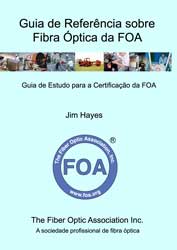 FOA is a very international organization and it works hard to
accommodate the language needs of everyone. We have been translating our
books and website into the languages most requested, and this month, we
add two more textbook translations. We also want to thank Jerry Morla,
FOA CFOS/I instructor and Director who has been doing the recent
translations into Spanish, his native language.
FOA is a very international organization and it works hard to
accommodate the language needs of everyone. We have been translating our
books and website into the languages most requested, and this month, we
add two more textbook translations. We also want to thank Jerry Morla,
FOA CFOS/I instructor and Director who has been doing the recent
translations into Spanish, his native language.
Here is a listing of all the FOA textbook Translations
Spanish Editions:
Guía de Referencia de la Asociación de Fibra Óptica (FOA) Sobre Fibra Óptica: Guía de estudio para la certificación de la FOA Amazon
La Referencia de Cableado para Predios de la FOA: Guía para Certificación de la FOA Amazon
La Asociación de Fibra Óptica Manual de Fibra Hasta el Hogar : Para Planificadores, Gestores, Diseñadores, Instaladores y Operadores De FTTH Amazon
Guía de Referencia de la FOA sobre Diseño de la red de fibra óptica: Guía de Estudio para la Certificación de la FOA Amazon
And the FOA Reference Guide To Fiber Optics:
French Edition: Le Guide de référence de la FOA pour la fibre optique et et guide d'étude pour la certification FOA: Guide d'étude pour la certification FOA Amazon
Portuguese Edition: Guia de Referência sobre Fibra Óptica da FOA : Guia de Estudo para a Certificação da FOA Amazon
The subject matter of these books is also translated in the FOA Guide online.
Planning A Fiber Optic Project?
The FOA Guide To Fiber Optic Projects includes this timeline and comments on project planning and implementation.FOA Video
Lectures On YouTube
Did
you know YouTube will close caption videos in many
languages?
Sign in with Google to get translations for closed captioning. Click on the settings icon (red arrow.) Choose "Subtitles". English is the default language. Click on the arrow after "English (auto-generated) >". In the new window click on "Auto-translate" and choose the language you want.
FOA Loss Budget
Calculator On A Web Page 5/2020
FOA has written many articles about loss budgets, something everyone involved in fiber optics needs to know and needs to know how to calculate. We recently discovered how to get a spreadsheet ported to a Web page, so we created this web page that calculates loss budgets. We have an iOS loss budget app, but with this web page, you can calculate loss budgets from any device, smart phone, tablet, laptop, or desktop computer that has web browsing capability.

Bookmark this page (especially on your smartphone): FOA Loss Budget Calculator Online
 We are continually updating the Online Reference
Guide to keep up with changes in the industry and
adding lots of new pages of technical information.
When you go to the FOA
Guide Table of Contents to see the latest
updates - look for
We are continually updating the Online Reference
Guide to keep up with changes in the industry and
adding lots of new pages of technical information.
When you go to the FOA
Guide Table of Contents to see the latest
updates - look for  .
.

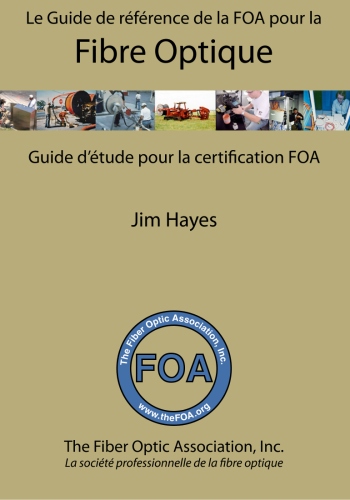





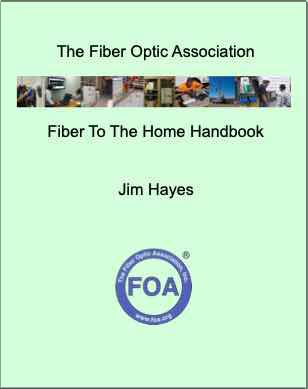

Fiber Optics (4 languages), Premises Cabling, OSP fiber and construction, Network Design, Testing, FTTH Handbook and our latest - FIber Broadband
-
The FOA has it's own
reference books for everyone working in fiber
optics - contractors, installers and end users as
well as for use as textbooks in classes at
educational institutions. They are available as
printed books or Kindle at much lower prices than
most textbooks since we self-publish and sell
online, cutting out the middlemen. Click on the
book images for more information. The Reference
Guide To Fiber Optics is also available in
Spanish, French and Portuguese. The Design book is available in English
and Spanish.
Click on any book for more information about it.
FOA has reprinted

"Lennie Lightwave's Guide" on its 25th anniversary in a special print edition.
Lennie and Uncle Ted's Guides are online.
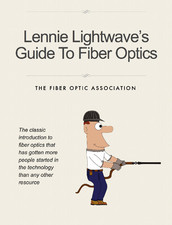

Click on any of the books to learn more.
- Fiber Optic Safety Poster to download and print
Resources For Teachers In K-12 And Technical Schools
Teachers in all grades can introduce their students to fiber optic technology with some simple demonstrations. FOA has created a page for STEM or STEAM (science, technology, engineering, arts and math) teachers with materials appropriate to their classes. Fiber Optic Resources For Teachers.
Safety
On Safety
The FOA is concerned about safety!FOA considers safety an integral part of all our programs, curriculum materials and technical materials. We start all our textbooks and their online versions with a section on safety in the first chapter, like this: Before we get started - Safety First!
There are pages on the FOA Guide on Safety procedures Including Eye Safety and. Digging Safely
And a YouTube lecture: FOA Lecture 2: Safety When Working With Fiber Optics
In our OSP Construction Section, these pages cover many safety issues including those related to the construction of the cable plant: Project Preparation And Guidelines, Underground Cable Construction, Underground Cable Installation and Aerial Cable Installation.
There is even a safety poster for the fiber activities: PDF Safety Rules For Fiber Optics
Other Safety Resources:
There is a toll-free
"call before you dig" number in the USA: Dial 811. See www.call811.com
for more information in the US. Here is their map of resources by states.
In Canada, it's "Click Before You Dig.com" They also have a page of resources by US states and Canadian provinces.
The Common Ground
Alliance has an excellent "Best Practices Guide"
online
- The US Department of Transportation has a website called "National Pipeline Mapping System" that allows one to search for buried pipelines.
Why We Warn You To Be Careful About Fiber Shards
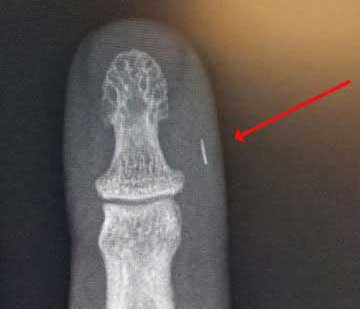
Photo courtesy Brian Brandstetter, Mississauga Training Consultantcy
FOA Corporate Program - Products & Services
Search for products and services offered by hundreds of fiber optic companies worldwide.
List of corporate information on the FOA website.
FOA Corporate Program is available to companies involved in fiber optics as manufacturers, contractors, installers, etc. Read more.
FOA/About
About The FOA
- Contact
Us: http://www.foa.org
or email <info@foa.org>
FOA has a company page and four LinkedIn Groups
FOA - official company page on LinkedIn
FOA - covers FOA, technology and jobs in the fiber optic marketplace
FOA Fiber Optic Training - open to all, covers fiber optic technology and training topics
Grupo de La Asociación de Fibra Óptica FOA (Español)
What is The FOA?
The FOA is a, international non-profit educational association chartered to promote professionalism in fiber optics through education, certification and standards.
Founded in 1995 by a dozen prominent fiber optics trainers and leaders from education, industry and government as a professional society for fiber optics and a source of independent certification, the FOA has grown to now being involved in numerous activities to educate the world about fiber optics and certify the workers who design, build and operate the world's fiber optic networks.
Read More
FOA History
FOA Timeline of Fiber Optics
Contact Us
The Fiber Optic Association Inc.
https://www.foa.org or email <info@foa.org>
https://www.thefoa.org or email <info@thefoa.org>
Telephone/text: 760-451-3655
The FOA Home Page

Want to know more about fiber optics? Study for FOA certifications? Free Self-Study Programs are on "Fiber U®." Looking for specific information? Here's the largest technical reference on the web: The FOA Online Fiber Optic Reference Guide.

Free online self-study programs on many fiber optics and cabling topics are available at Fiber U, FOA's online web-based training website.
-
Contact Us
The Fiber Optic Association Inc.
Fiber Optic Timeline
(C)1999-2023, The Fiber Optic Association, Inc.
FOA Logo Merchandise
-
New FOA Swag! Shirts,
Caps, Stickers, Cups, etc.


Your Name, CFOT® - It pays to advertise!
The FOA encourages CFOTs to use the logo on their business cards, letterhead, truck or van, etc. and provides logo files for that purpose. But we are also asked about how to use the CFOT or CFOS certifications. Easy, you can refer to yourself as "Your Name, CFOT" or "Your Name, CFOS/T" for example.
Feel free to use the logo and designations to promote your achievements and professionalism!
Contact FOA at info@thefoa.org to get logos in file format for your use.Privacy Policy (for
the EU GDPR): The FOA does not
use cookies or any other web tricks to gather
information on visitors to our website, nor do
we allow commercial advertising. Our website
hosts may gather traffic statistics for the
visitors to our website and our online testing
service, ClassMarker, maintains statistics of
test results. We do not release or misuse any
information on any of our members except we will
confirm FOA certifications and Fiber U
certificates of completion when requested by
appropriate persons such as employers or
personnel services.
Read
the complete FOA Privacy Policy here.







